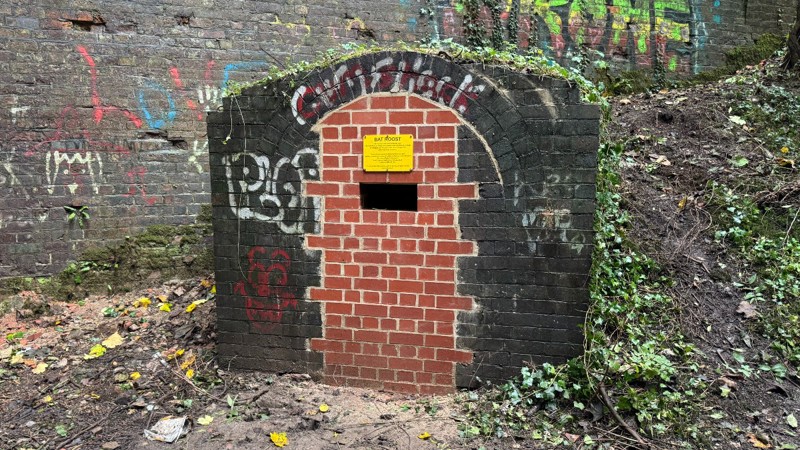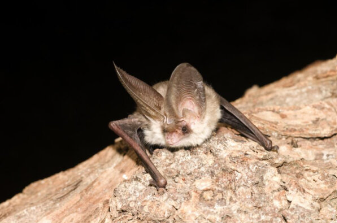Old fogging hut converted to bat home
Published
21 Oct 2024
Discover how we’ve given bats a new place to hibernate with the conversion of a disused fogging hut.

Share this article
Protecting the environment and the nature in and around our historical railway structures is key to the work we do to look after our estate.
During Autumn 2024, a tunnel tucked in the Cotswold countryside was due to receive some minor repairs. During our ecological survey by our partner Jacobs, we were pleasantly surprised to find an old, disused fogging hut nestled besides the tunnel.
Fogging huts were found by the railway line during the time of their inception, from almost 200 years ago. Their purpose was to provide a place for the ‘fog man’ to store his equipment. The fog man was responsible for creating fog signals with detonators along the line to warn train drivers of signals, speed restrictions or track works ahead.
“This fogging hut wasn’t part of the original proposed works but, when we did the surveys on the tunnel, we checked the fogging hut too and found a whiskered bat inside, hibernating,” says our ecologist working on the site.
“We were quite surprised to find this bat in the fogging hut because there were quite a few issues with the structure as it was. There had clearly been kids messing around down there and it has been graffitied. It’s also open to the elements. Usually, bats prefer somewhere that is more enclosed.”


Left: A brown long-eared bat. Right: A whiskered bat.
The minor works to the tunnel were completed under a bat licence and, as part of that, it was decided that with some enhancements, the fogging hut could provide the perfect hibernaculum, providing a safe place for bats to hibernate in the winter months, as well as a place to roost in the summer.
Our works to improve the fogging hut should encourage more bats to hibernate there in the future.

Making a hut a home
When the construction team started work on repurposing the structure, they found that it had an old chimney inside, which meant there was a hole in the top of the hut where the smoke had previously escaped from.
Our improvements included removing the chimney so that we could also seal over the top. Large roof openings aren’t beneficial for hibernacula because they allow air and water inside. For hibernation, bats like humidity and a stable low temperature.
In terms of keeping the bats safe inside, the team bricked up the entrance and left a small post box-style hole at the top of the hut, so bats can easily fly inside and out, but it stops the bats from being disturbed by humans and predators.
In addition to securing the structure, improvements were added to the inside of the hut, including corrugated sheeting at varying heights to provide a higher likelihood of bats being able to find suitable conditions to hibernate.
Some bats, also called ‘crevice dwelling species’, like to crawl up behind crevices to roost. The grooves of the corrugated sheets provide these crevices for the bats. A clear material was used for this so we can look inside the hut in the future to see if the bats are using their new home and to monitor them.
Over the coming months and years, our team of ecologists will be monitoring the fogging hut to see if more bats are living within the structure, helping us to protect the UK’s native species.
Find out more on our approach to protecting and enhancing the biodiversity of our sites.

